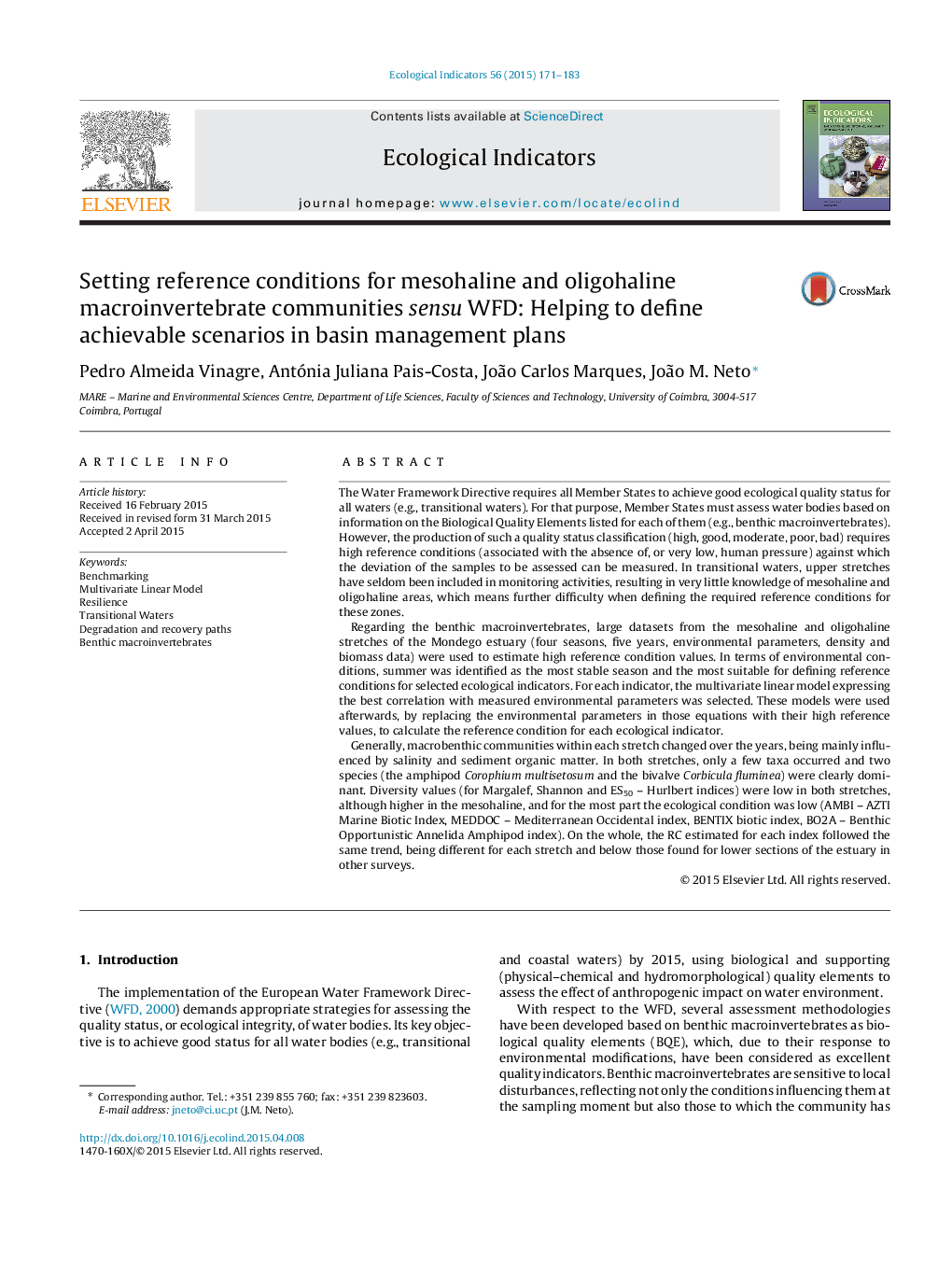| کد مقاله | کد نشریه | سال انتشار | مقاله انگلیسی | نسخه تمام متن |
|---|---|---|---|---|
| 6294354 | 1617145 | 2015 | 13 صفحه PDF | دانلود رایگان |
عنوان انگلیسی مقاله ISI
Setting reference conditions for mesohaline and oligohaline macroinvertebrate communities sensu WFD: Helping to define achievable scenarios in basin management plans
دانلود مقاله + سفارش ترجمه
دانلود مقاله ISI انگلیسی
رایگان برای ایرانیان
کلمات کلیدی
موضوعات مرتبط
علوم زیستی و بیوفناوری
علوم کشاورزی و بیولوژیک
بوم شناسی، تکامل، رفتار و سامانه شناسی
پیش نمایش صفحه اول مقاله

چکیده انگلیسی
The Water Framework Directive requires all Member States to achieve good ecological quality status for all waters (e.g., transitional waters). For that purpose, Member States must assess water bodies based on information on the Biological Quality Elements listed for each of them (e.g., benthic macroinvertebrates). However, the production of such a quality status classification (high, good, moderate, poor, bad) requires high reference conditions (associated with the absence of, or very low, human pressure) against which the deviation of the samples to be assessed can be measured. In transitional waters, upper stretches have seldom been included in monitoring activities, resulting in very little knowledge of mesohaline and oligohaline areas, which means further difficulty when defining the required reference conditions for these zones.Regarding the benthic macroinvertebrates, large datasets from the mesohaline and oligohaline stretches of the Mondego estuary (four seasons, five years, environmental parameters, density and biomass data) were used to estimate high reference condition values. In terms of environmental conditions, summer was identified as the most stable season and the most suitable for defining reference conditions for selected ecological indicators. For each indicator, the multivariate linear model expressing the best correlation with measured environmental parameters was selected. These models were used afterwards, by replacing the environmental parameters in those equations with their high reference values, to calculate the reference condition for each ecological indicator.Generally, macrobenthic communities within each stretch changed over the years, being mainly influenced by salinity and sediment organic matter. In both stretches, only a few taxa occurred and two species (the amphipod Corophium multisetosum and the bivalve Corbicula fluminea) were clearly dominant. Diversity values (for Margalef, Shannon and ES50 - Hurlbert indices) were low in both stretches, although higher in the mesohaline, and for the most part the ecological condition was low (AMBI - AZTI Marine Biotic Index, MEDDOC - Mediterranean Occidental index, BENTIX biotic index, BO2A - Benthic Opportunistic Annelida Amphipod index). On the whole, the RC estimated for each index followed the same trend, being different for each stretch and below those found for lower sections of the estuary in other surveys.
ناشر
Database: Elsevier - ScienceDirect (ساینس دایرکت)
Journal: Ecological Indicators - Volume 56, September 2015, Pages 171-183
Journal: Ecological Indicators - Volume 56, September 2015, Pages 171-183
نویسندگان
Pedro Almeida Vinagre, Antónia Juliana Pais-Costa, João Carlos Marques, João M. Neto,